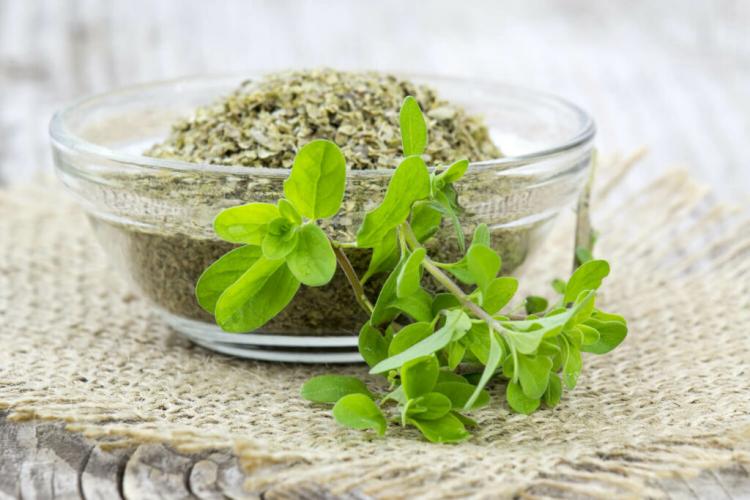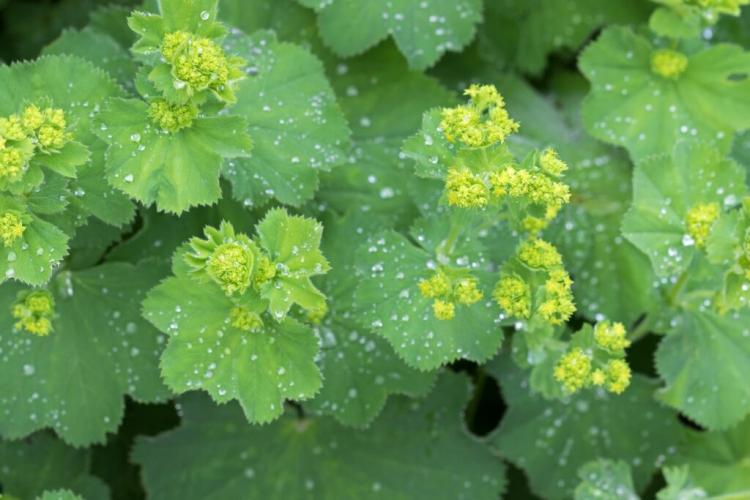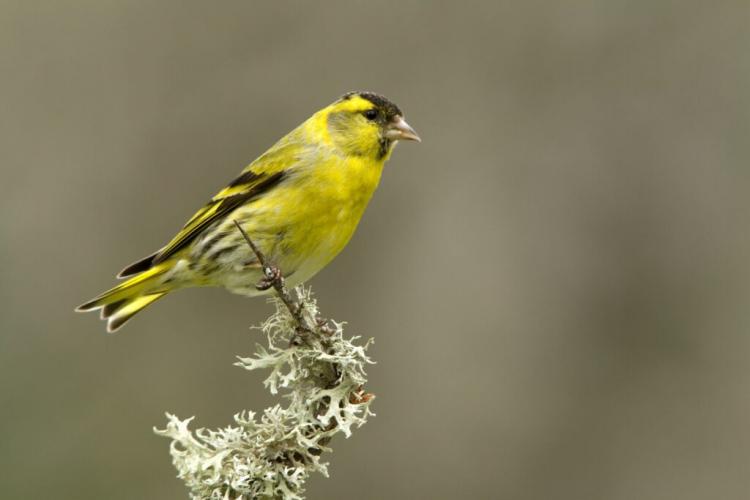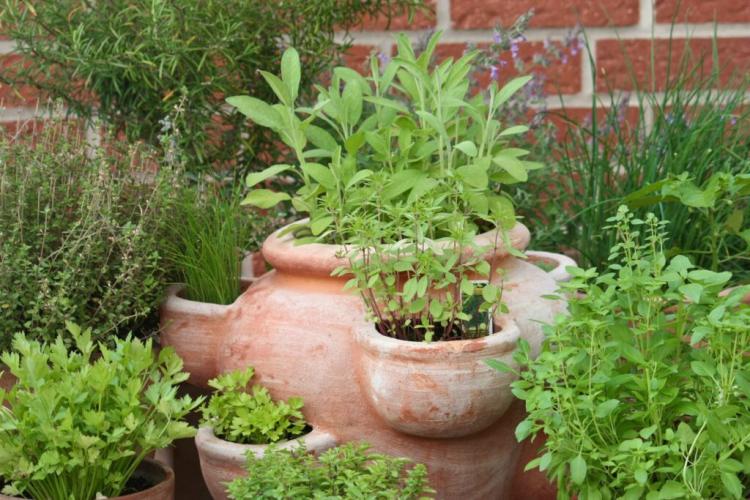Yucca palm: care, propagation & cutting (overview)
The yucca palm is an indispensable part of any living room. We have compiled all information about the popular indoor palm for you.
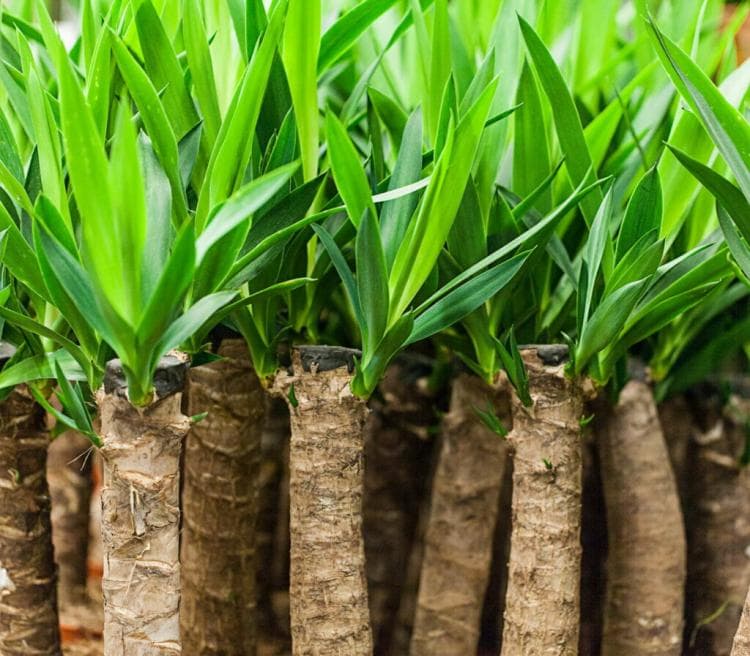
Yuccas are reliable houseplants that can thrive in your own four walls with little effort [Photo: Alexeysun / Shutterstock.com]
Yuccas ( yucca) (also known as palm lilies) are reliable indoor plants that can thrive in your own four walls with little effort. The palm-like plant, despite its misleading name, is not actually a palm, but an agave plant ( Agavoideae ). In this article, we reveal how you can successfully care for, propagate and cut your yucca in-house.
Yucca palm: origin and characteristics
Table of Contents
The plant, which originally comes from the deserts of Central and North America, has found its way into our homes and is very popular due to its exotic appearance. The giant palm lily (Yucca elephantipes ) is particularly common in living rooms. In addition to indoor plants, there are also a number of yucca species that are also suitable for outdoor cultivation in Germany and that survive the cold winter in this country. All species are characterized by their pointed and hard leaves, which emerge like spines from the center of the plant. Because of this, careful handling of the prickly agave plants is advisable.
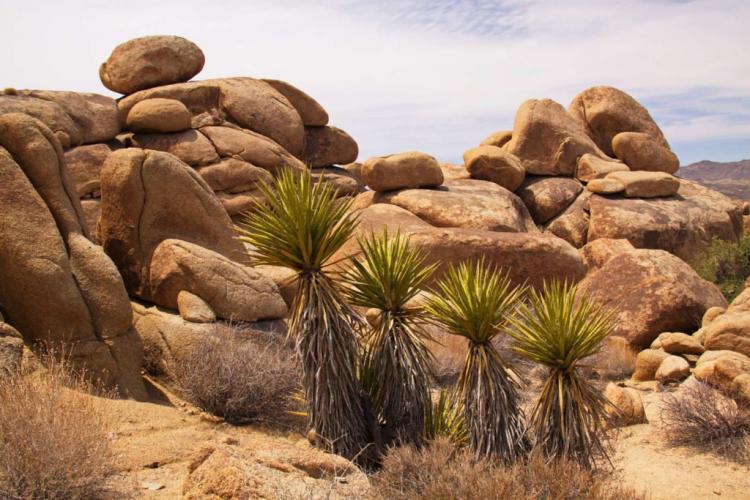
The plant, which originally came from the deserts of Central and North America, has found its way into our homes [Photo: Karel Stipek / Shutterstock.com]
Is the yucca palm poisonous?
There are myths about the toxicity of yuccas that are not easy to answer. At least one thing can be said: The palm-like plants contain so-called saponins, which are secondary plant substances that can lead to stomach and digestive problems when consumed, especially in babies and pets. How poisonous yucca palms really are cannot be fully explained. Another aspect, however, is the risk of injury caused by the sharp-edged leaves of the plant.
Note the following aspects of yucca palms:
- The leaves and stem contain saponins
- Can potentially cause discomfort in babies and pets
- Sharp-edged leaves can cause injuries
You can find more information on this subject in our article “Is the Yucca Palm Poisonous?”.
Buying a yucca palm: What to look out for when buying
The first step in getting yourself a yucca palm for indoors or outdoors is to buy the right plant. In general, it is advisable not to buy the yucca in the supermarket despite the low prices, as there is often a lack of quality. Instead, it is better to use specimens from a nursery or a garden center. In any case, a preliminary plant health check is important. Healthy yucca palms should be a rich, green color, but depending on the species, it is normal for the leaves to hang down as well.
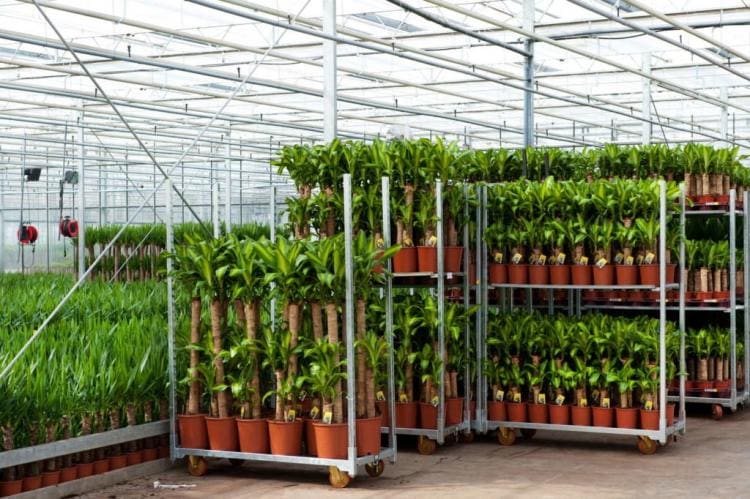
Healthy yucca palms should have a rich, green color [Photo: Ivonne Wierink / Shutterstock.com]
Yucca Palm: Which Location is Best?
Yuccas are usually kept indoors as a normal houseplant. In this case, you should always pay attention to a bright location in the house, ideally place the plant near the window. The exotic plants usually do not mind cool temperatures in the house during winter. However, only a few people know that some species of the agave family can also grow in our field, which is why we present the optimal garden location below.
The yucca palm outside
As a desert plant, yuccas also bring a southern flair to the garden, which can even be preserved during winter. Several species such as the filamentous palm lily ( Yucca filamentosa ) or the candle palm lily ( Yucca gloriosa ) are hardy and can therefore be cultivated with us over the long term. These species can also impress with their large, white inflorescences outdoors. Due to its sunny origin, the following applies to both the filamentous palm lily close to the ground and the taller candle palm lily: The plant needs a full sun, sheltered and warm place if it is cultivated outside. The south side of the house wall or a wall is ideal for this purpose.
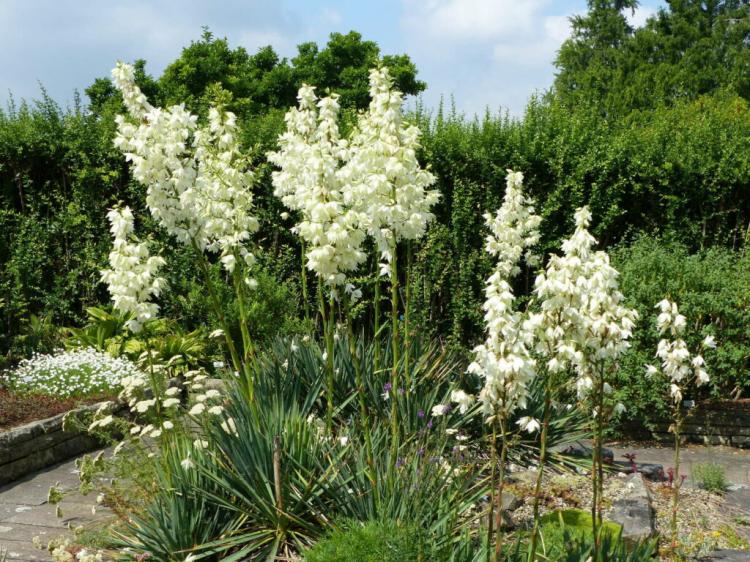
Some species also develop large, white inflorescences [Photo: guentermanaus / Shutterstock.com]
Yucca palm: the right soil
The right substrate is definitely an important factor for the yucca, as the greatest damage is caused by too much water. Yucca – whether outdoors or in pots – do not tolerate waterlogging and therefore thrive best on loose and nutrient-rich substrate. The soil should always be permeable, which is why a drainage layer made of expanded clay at the bottom of the container is ideal for pot culture. If the substrate is too compact, mixing in sand can help.
These aspects must be taken into account when choosing the right location:
- As a houseplant: Heller choice of location
- Outdoors: full sun, sheltered and warm place (south side)
- Well drained and nutrient-rich soil
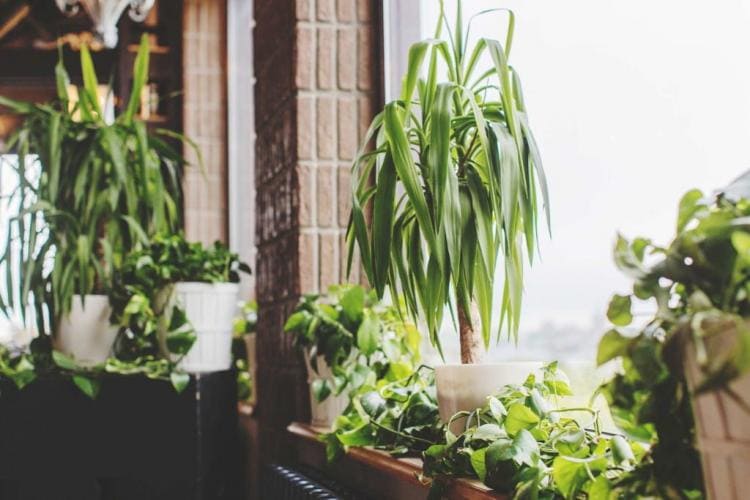
The yucca feels most comfortable in a light spot by the window [Photo: Amilao / Shutterstock.com]
Caring for the yucca palm: professional tips
Yucca palms are considered to be very easy to care for, which makes them particularly popular as a houseplant. However, some points should also be observed with the agave plant.
Water the yucca palm properly
Yuccas are very sensitive to too large amounts of water, so in principle less than too much should be poured. Every now and then you should still water so that the plant does not sit permanently on dry land. When cultivating in pots, always make sure that not too much water collects on the saucer.
Fertilize the yucca palm properly
When it comes to the supply of nutrients to palm-like plants, the following applies: In the open air, the slight incorporation of compost is sufficient every year; in the case of potted cultivation, additional nutrients should be added due to the limited soil volume. The first step is to change the substrate approximately every two years. As an ecological method, nettle manure is also suitable as a great fertilizer, but should always be diluted with water. Use tap water rather than rainwater, as it contains more of the lime that is important for yuccas.
Yucca Palm: Common Diseases and Pests
When handled correctly, a yucca palm does not usually pose any major problems, as these are often caused by too much watering. Nevertheless, in some cases diseases and pests can nestle which you should definitely get rid of. These include fungal diseases such as powdery mildew or animal pests such as spider mites. While the latter feel particularly comfortable in dry air, fungal diseases and rot are favored by excessively high (air) humidity. More detailed information on diseases in the yucca can be found here.
Caring for the yucca palm: what can go wrong?
Changes to the leaves of the agave family can occur from time to time. We examine the reasons and what you can do about it.
Yucca palm has yellow leaves
One of the most common problems is the leaves turning a yellowish tinge. In most cases, the reason for this is excessive humidity or an excess supply of water, to which the plant is sensitive. If you can rule this out as the cause, lack of light may be an option. The discolored leaves in the upper part of the plant are in any case a sign of incorrect care.
Yucca palm: leaves have brown tips
Brown tips on the elongated leaves, like a yellowish discoloration, can indicate an excess of water. On the other hand, strong sunlight or very dry air in winter (for example next to the heater) can cause sunburn or dehydration. When using the yucca as a houseplant, pay particular attention to a bright, but not too sun-exposed place and only ensure additional moisture in the air in winter.
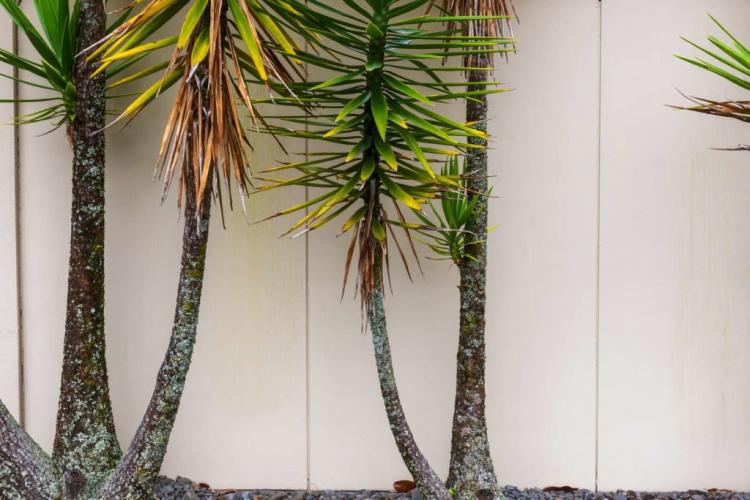
Discolored leaves often indicate improper care [Photo: ChandraSekhar / Shutterstock.com]
Yucca palm is losing leaves
All of the aforementioned care errors can ultimately lead to the plant's leaves falling off if they are not remedied. Leaf fall can be particularly serious if additional parts of the plant become soft and rotten. This can either be due to waterlogging or a bacterial or fungal disease. In this case, remove the affected areas immediately.
But be careful : If leaves fall from the lower part of the plant from time to time, it is usually a natural process, as the trunk grows and new leaves are reproduced on the crown.
Discolored and falling leaves can indicate the following problems:
- Too much water / too high humidity
- Too little / much light
- Too dry air in winter
- Infections caused by bacteria, fungi or viruses
Cut off the yucca palm
With their prickly shape, palm lilies can grow very expansively and can be pruned well. We show when and how you should cut a yucca.
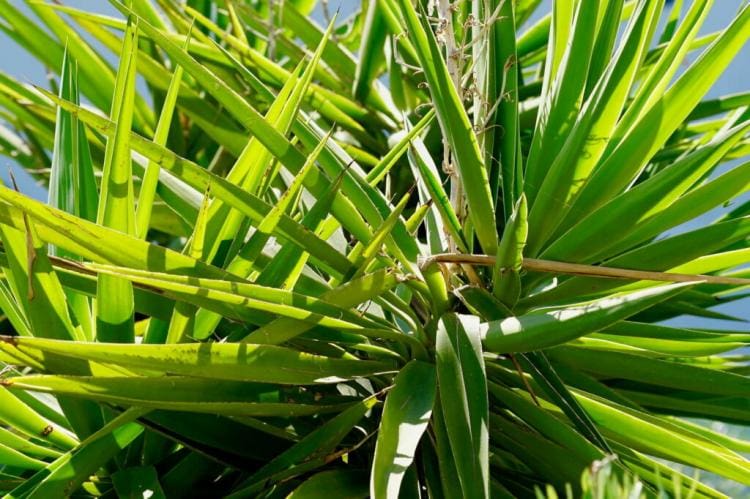
With their prickly shape, palm lilies can grow very expansively and tolerate pruning well [Photo: Peter Maerky / Shutterstock.com]
When is the best time to cut the yucca palm?
Yuccas will sprout again after a short time if they are cut. It is therefore advisable to prune the plant in spring during the growing season so that there is enough time until winter. In addition to capping plant parts for reasons of space, thinning or cutting off diseased plant parts can also be good for the yucca palm.
How is the yucca palm properly cut?
Crooked and dense leaves can easily be removed at the base with sharp scissors to give the plant and you more light and space. In addition to smaller cuts, the trunk can also be cut without any problems without causing any major damage to the plant. Due to the thickness, use a saw for the cut. The wound should ideally be closed with tree wax after cutting so that no infections occur and the plant does not lose moisture.
Note : When cutting yucca palms, the sharp-edged leaves can easily injure you. It is therefore always advisable to wear gloves when cutting.
Propagate the yucca palm yourself
Yucca palms are great for growing new cuttings and offshoots. In this way, the desert plant can be propagated in a very short time, especially if it has to be cut anyway. To pull cuttings, proceed as follows for palm lilies (with higher growth):
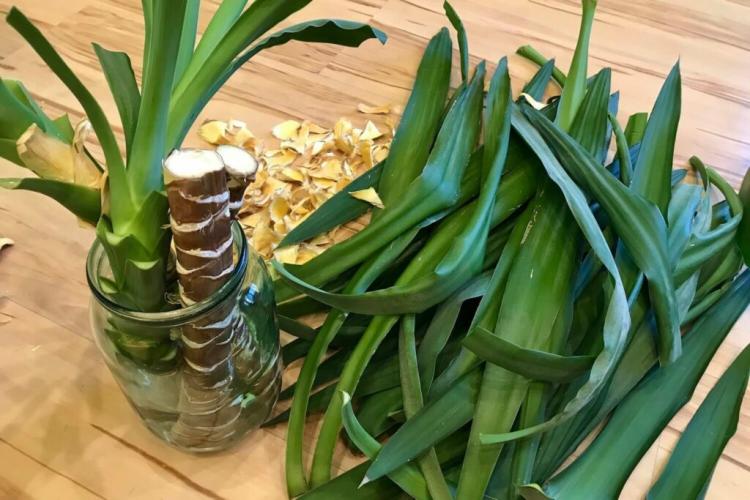
The yucca palm can easily be propagated yourself [Photo: Mala Iryna / Shutterstock.com]
- Either cut off individual shoots or, if the trunk is cut more heavily, take a part aside. Cutting cuttings should only be done from spring to early summer.
- Put the part of the plant in a growing medium made of soil and sand. Leaves should not be in the ground.
- Keep the soil moist, the pot should be in a sunny and warm place.
- After a few weeks, new roots will form in the substrate and the palm lily can be repotted.
By the way : In the case of low-growing species such as the filamentous palm lily, the yucca can also be propagated by dividing it.
You can find out more about the correct care of yucca palms here.

